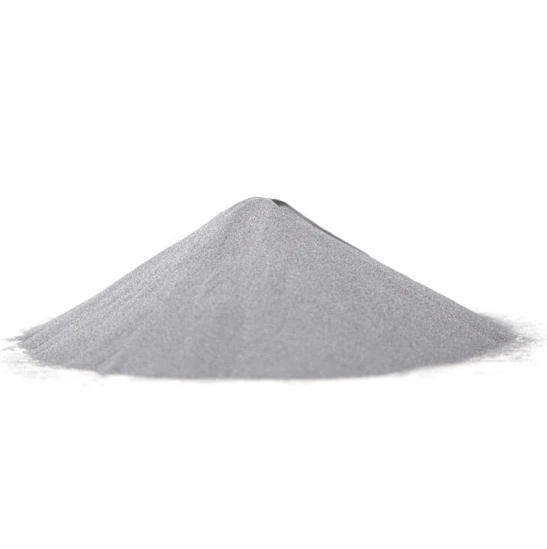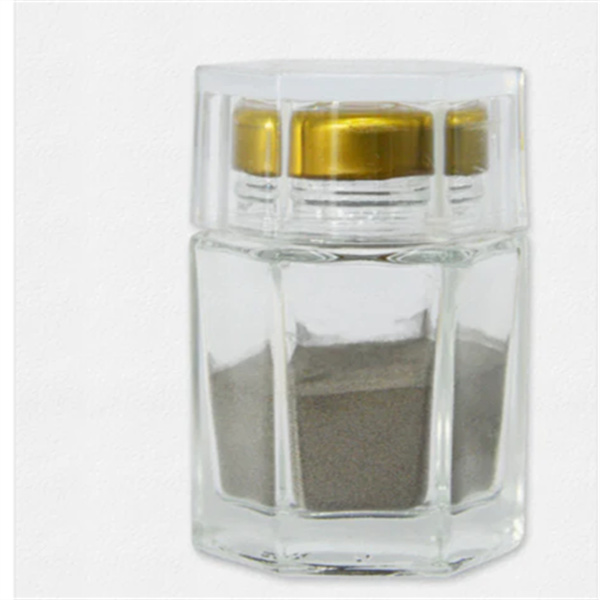热等静压 (HIP) 是一种用于消除金属、陶瓷和其他材料的气孔并提高其密度的制造工艺。本文概述了 HIP 的工作原理、涉及的主要设备、典型应用以及选择 HIP 服务的指导原则。
什么是热等静压及其工作原理?
热等静压是一种高压高温致密化工艺,用于消除材料内部的空隙和气孔。其目的是通过消除缺陷来提高机械性能和性能。
HIP 通过等静压介质实现高压,等静压介质是在所有方向均匀施加的气体或液体。与单向压力相比,这种方法使材料受到来自各方面的同等压力。高温使材料塑化,因此压力可以使内部空隙塌陷,缺陷熔合。
在 HIP 过程中,热量和压力的结合会导致致密化,并显著改善经处理部件的断裂韧性、疲劳、强度、渗漏和其他性能。
HIP 流程步骤
热等静压包括封装、加热、加压、冷却和释放部件的多个阶段。主要步骤包括
- 载荷 - 工件经过固定后装入 HIP 容器。几个小零件可以分批装在一起。
- 密封 - 对容器进行抽空、密封和泄漏测试。各部件必须完全密封。
- 热量 - 容器加热到目标 HIP 温度,具体温度取决于材料。这需要几个小时。
- 加压 - 一旦达到温度,高压气体就会被引入容器,使容器内的等静压达到 30,000 PSI。
- 保持 - 根据需要,温度和压力保持时间为 1-6 小时不等。
- 酷 - 保温时间结束后,在释放压力之前让容器冷却。
- 卸载 - 打开容器,去除封装材料,卸下处理过的部件。
根据所需的 HIP 工艺参数,该周期时间为 4-10 小时不等。如有需要,部件可经过多个 HIP 循环。
表 1 列出了四个关键工艺参数--温度、压力、时间和加热/冷却速率。
| 工艺参数 | 典型范围 |
|---|---|
| 温度 | 1000 - 2000°c (1830 - 3630°f) |
| 压力 | 15,000 - 30,000 psi |
| 时间 | 1 - 6 小时 |
| 供暖和制冷费率 | 100 - 500°C/hour (180 - 930°F/hour) |
表 1: 热等静压的关键工艺参数
HIP 如何改善材料性能
HIP 过程中的高压和高温促进了材料微观结构的多重变化:
- 封闭内部孔隙和空隙
- 粉末颗粒的扩散粘合
- 消除微裂纹
- 消除铸造缺陷
- 改进均质
- 谷物细化
这大大提高了密度、强度、延展性和其他机械性能。主要优点包括
- 提高承载能力
- 更高的断裂韧性
- 提高疲劳寿命
- 增强耐腐蚀性
- 减少材料性能的变化
- 气体或流体密封的防漏处理
- 恢复脆化合金的延展性
HIP 通常用作增材制造后的后处理步骤,以提高 3D 打印部件的密度、性能和可靠性。

HIP 设备类型和系统组件
HIP 系统主要有两种类型:
气体压力系统
- 使用氩气等惰性气体作为等静压介质。
- 可达到更高的压力 - 高达 30,000 PSI。
- 用于 1200°C 以上的高温 HIP 循环。
- 适用于钛合金等活性材料。
液体压力系统
- 用油等液体作为加压介质。
- 通常限于 10,000 PSI 的压力能力。
- 用于 1000°C 以下的低温 HIP。
- 由于热传导效果更好,因此冷却速度更快。
除主压力容器外,HIP 系统还包括几个辅助部件:
- 加热元件 - 加热容器的石墨或金属电阻加热器。
- 冷却系统 - 用于通过水或油进行主动冷却,以实现更快的冷却速度。
- 真空泵 - 用于容器的初始脱气和排空。
- 气体增压器 - 增压器将气体压缩到所需的压力水平。
- 控制系统 - 用于 HIP 循环的编程和监控。
先进的 HIP 设备还可能具有快速冷却功能、多级循环、更高的吞吐量和工业 4.0 数据功能。
表 2 概述了 HIP 系统的不同设备类型和主要组成部分:
| 设备类型 | 加热方法 | 加压介质 | 最大压力 | 典型温度范围 | 主要组成部分 |
|---|---|---|---|---|---|
| 气体 HIP | 电阻加热 | 惰性气体 - 氩气 | 高达 30,000 PSI | 高于 1200°C | 容器、加热器、气体增压器、控制系统 |
| 液体 HIP | 电阻加热 | 液体 - 油 | 高达 10,000 PSI | 低于 1000°C | 容器、加热器、增压器、冷却系统、控制系统 |
表 2: 不同 HIP 设备类型和主要组件的比较
HIP 系统的大小和容量
HIP 设备的特点是容器尺寸和可用直径。典型的容量范围为直径 1-100 英寸。
6 英寸以下的小型实验室设备用于研究和试生产。18-42 英寸的中型系统通常用于生产应用。直径超过 60 英寸的大型 HIP 设备用于超大型零件的增密。
主要的尺寸指标有
- 容器直径 - 压力容器的内径,单位为英寸。这限制了部件的最大尺寸。
- 电荷量 - 在一个周期内可装载用于致密化的总体积。
- 吞吐量 - 基于周期时间的生产率。批量越小,次数越多,产量越高。
除尺寸外,选择 HIP 系统的关键因素还包括最高温度、额定压力、冷却速度和循环时间。
表 3 列出了常见的容器尺寸和相应的容量。
| 容器直径 | 典型装载量 | 适用应用 |
|---|---|---|
| 1-6 英寸 | 最多 0.5 立方英尺 | 小部件,研究 |
| 18 英寸 | 1-2 英尺3 | 中型部件 |
| 24-42 英寸 | 4-12 立方英尺 | 大部件,高产量 |
| 60 英寸以上 | 高于 20 英尺3 | 超大型部件 |
表 3: HIP 设备尺寸和容量比较
HIP 流程标准和代码
有几项标准规定了热等静压工艺的程序和要求,以实现适当的致密化。这些标准有助于确定工艺参数、检查方法、安全性和鉴定协议。
其中一些主要标准包括
- AMS-H-81200 - 部件 HIP 的 SAE 航空航天标准
- ISO-20421 - 金属粉末 HIP 国际标准
- ASTM F-3049 - 金属注射成型材料 HIP 标准指南
- EN-28401 - 欧洲 HIP 船舶标准
使用 HIP 生产的部件还可能需要满足特定行业或应用的标准,例如航空航天、国防、核能或石油天然气行业。
在确定 HIP 流程时,必须审查所有适用的规范和标准,以便在满足法规要求的同时实现密集化目标。
典型的 HIP 应用和适用材料
热等静压技术被广泛应用于许多行业,以提高金属、合金、陶瓷和复合材料的性能。
典型应用包括
航空航天
- 涡轮叶片、盘、外壳
- 机身结构部件
- 火箭喷嘴和燃烧室
汽车
- 发动机气门和连杆
- 传动齿轮
- 悬挂部件
能源
- 油田工具和钻头
- 阀门、管道和容器
- 核燃料元件
工业
- 切割工具和模具
- 热加工和冷加工工具钢
- 硬质金属,如碳化钨
快速成型制造
- 对 3D 打印金属进行 HIP 处理,以提高密度、强度和表面光洁度
几乎所有材料都能从 HIP 变质中受益。最常见的合金和材料类型包括
- 不锈钢
- 工具钢
- 钛和镍合金
- 超级合金 - Inconel、Waspaloy
- 钨和钼合金
- 陶瓷 - 氮化硅、氧化铝、氧化锆
- 金属基复合材料
表 4 按材料和行业总结了热等静压的一些应用:
| 行业 | 材料与合金 | 典型部件和用途 |
|---|---|---|
| 航空航天 | 钛、镍和铁合金 | 涡轮叶片、机身结构部件 |
| 国防 | 装甲材料、钨合金 | 装甲板、穿甲弹 |
| 汽车 | 工具钢、超级合金 | 齿轮、连杆 |
| 石油和天然气 | 不锈钢、铬镍铁合金 | 井下工具、阀门 |
| 发电 | 超合金、复合材料 | 涡轮叶片、热交换器 |
| 快速成型制造 | 钛、铬镍铁合金、钴铬合金 | 3D 打印金属、植入物 |
表 4: 按材料和行业分列的热等静压应用
HIP 流程开发
要确定合适的 HIP 工艺参数,需要根据材料、零件设计和所需性能进行开发测试。
工艺开发的关键步骤是
- 制定密集化目标--目标密度、属性
- 鉴定起始材料 - 成分、缺陷和空隙
- 进行热分析以确定 HIP 温度
- 分析太空舱设计--尺寸、固定装置、排气装置
- 进行 HIP 试验 - 改变时间、温度和压力
- 测试样品以测量密度和特性
- 根据结果优化周期
这项研发旨在确定实现完全致密化以及改善断裂韧性、疲劳、强度和其他机械性能所需的最低参数。
与传统的一次性单因素测试相比,实验设计 (DOE) 等快速工艺优化方法可加快 HIP 参数的开发。
HIP 的设计指南和注意事项
在开发用于热等静压的部件时,必须考虑几个设计因素:
壁厚
- 超过 2 英寸的较厚部分可能需要热脱模循环
- 使用吃水角度,避免粉末滞留
- 优化流量,以便排气
表面处理
- 经过 HIP 抛光处理的表面粗糙度超过 125 微英寸
- 通常需要进行后 HIP 加工
- 0.02 英寸或更低的公差很难实现
几何学
- 避免阻碍密集化的尖角
- 设计均匀的切片,以实现均匀的 HIP
- 最大限度减少被困体积
材料
- 合金成分与 HIP 温度范围相匹配
- 考虑 HIP 对微观结构的影响
- 装配时使用兼容金属
对 HIP 工艺进行工程模拟,可以找出设计中需要修改的问题所在,从而实现完全致密化。
表 5 总结了热等静压零件的一些关键设计准则:
| 设计方面 | 建议 |
|---|---|
| 壁厚 | 截面保持在 2 英寸以下,以便排出残留气体 |
| 表面处理 | 预期 HIP 抛光粗糙度超过 125 微英寸 |
| 角落 | 用大半径圆角代替尖角 |
| 公差 | 将公差保持在 0.02 英寸以上,以满足 HIP 的要求 |
| 被困体积 | 尽量减少与外部不相连的封闭空间 |
| 通风 | 确保被困气体的逃逸通道 |
| 草稿角度 | 采用拔模角,便于清除粉末 |
| 夹具 | 设计夹具,防止部件在 HIP 期间移动 |
表5:热等静压设计指南

选择 HIP 服务提供商
不具备内部 HIP 能力的公司可以利用收费 HIP 服务提供商对零件进行增密。以下是选择供应商的关键因素:
- 设备 - 考虑最高温度、压力和部件尺寸需求。
- 经验 - 了解您所在行业和应用领域的专业知识。
- 质量 - 确保认证和流程控制到位。
- 周转时间 - 评估物流和典型的交货时间。
- 数据 - 他们能否提供详细的 HIP 报告和绘图?
- 研发支持 - 开发流程和试验的能力。
- 费用 - 平衡能力与定价和最低收费之间的关系。
强烈建议访问潜在供应商,对其流程进行第一手审核。
表 6 总结了选择热等静压服务提供商时的评估标准:
| 标准 | 关键问题 |
|---|---|
| 设备和能力 | 它们是否具有所需的温度、压力和尺寸能力? |
| 行业经验 | 他们是否拥有材料和应用方面的专业知识? |
| 质量体系 | 是否有严格的质量控制程序?是否持有相关认证? |
| 交货和交付周期 | 它们位于何处?一般需要多长时间? |
| 发展支持 | 它们能否支持工艺开发试验和优化? |
| 数据与报告 | 他们是否会为每次运行提供详细的参数报告和映射? |
| 定价 | 成本结构如何?是否有最低订购量或最低收费? |
表 6: 选择热等静压提供商的标准
热等静压的优缺点
热等静压工艺有许多优点,但也有一些需要考虑的局限性。
HIP 的优势:
- 提高密度,改善机械性能
- 封闭内部空隙,防止渗漏
- 将粉末材料组装成最终部件
- 完善微观结构
- 减少铸造缺陷
- 适用于复杂几何形状
- 将多个步骤合二为一(HIP + 热处理)
HIP 的缺点:
- 设备投资成本高
- 部件需要封装和固定
- 有限的最大部件尺寸
- 几何形状、通风等方面的限制。
- 通常需要进行后加工
- 可影响某些合金的微观结构
- 周期通常较长
对于许多应用而言,尽管 HIP 与其他合并方法相比周期更长、成本更高,但 HIP 所带来的性能提升使其成为一个有益的加工步骤。
谨慎的工艺开发和制造设计是有效利用 HIP 的关键,同时还要避免零件配置、系统容量和公差方面的限制。

常见问题
以下是有关热等静压技术和工艺的一些常见问题的答案:
问:哪些材料可以使用 HIP 技术?
答:HIP 可以对大多数合金进行致密化处理并改善其性能,包括不锈钢、钛、镍合金、工具钢、钨合金、氧化铝和氮化硅等陶瓷以及金属基复合材料。材料必须与 HIP 工艺的温度范围相匹配。
问:HIP 可以加工多大尺寸的零件?
答:典型的热等静压机直径从 1 英寸到 60 英寸以上不等。最大零件尺寸受压力容器内部尺寸的限制。较大的部件可能需要定制的 HIP 系统。
问:HIP 需要多长时间?
答:根据加热、冷却和保持时间,周期时间一般为 4-10 小时。大型部件可能需要 50 多个小时。要实现完全致密化,可使用多个 HIP 循环。
问:典型的 HIP 流程是什么?
答:常见的 HIP 循环是以 100°C/min 的速度加热到 1200°C,然后在 100 兆帕压力下保持 1-3 小时,再以 200°C/min 的速度冷却。但参数在很大程度上取决于材料和应用。
问:热等静压和冷等静压有什么区别?
答:HIP 采用高达 2000°C 的高温和高压,而 CIP 采用室温和较适中的压力。与 CIP 相比,HIP 可实现全面的致密化和性能改善,而 CIP 则只能实现固化。
问:HIP 是否能取代热处理或机械加工等其他工艺?
答:HIP 是对热处理和机加工等其他步骤的补充。HIP 能使零件致密化,然后通过进一步的热处理或机械步骤来实现零件的最终性能、公差和光洁度。
问:热等静压的成本是多少?
答:设备的资本成本很高。对于收费 HIP 服务,定价因零件尺寸、周期参数、件数和其他因素而异。预计每个周期的成本从数百美元到数千美元不等。
问:哪些标准适用于 HIP?
答:主要标准包括用于航空航天应用的 AMS-H-81200、用于粉末 HIP 的 ISO-20421、用于金属注射成型材料的 ASTM F-3049 和用于 HIP 容器的 EN-28401。特定行业的规范也可能适用。
